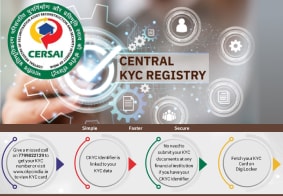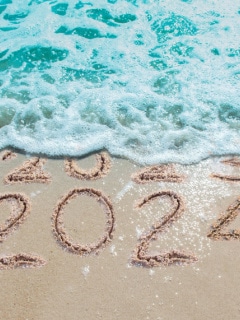CKYC Registry
-
Customer Service Contact us Service request Locate a branch
Find all the help you need
Scan the QR, get our app, and find help on your fingertips

Help CenterSupport topics, Contact us, FAQs and more
-
Login
Are you ready for an upgrade?
Login to the new experience with best features and services
-
Login
Are you ready for an upgrade?
Login to the new experience with best features and services
- Accounts
-
Deposits
IDFC FIRST Bank Deposits
View all Deposits -
Loans
IDFC FIRST Bank Loans
View all Loans - Wealth & Insure
-
Payments
IDFC FIRST Bank Payments
View all Payments -
Cards
IDFC FIRST Bank Cards
View all Cards - Blogs
- Corporate Account
-
Cash Management Services
IDFC FIRST Bank Cash Management Services
View all Cash Management Services - Supply Chain Finance
-
Corporate Lending
IDFC FIRST Bank Lending
View all -
Treasury
IDFC FIRST Bank Treasury
See more details - NBFC Financing
Support topics, Contact us, FAQs and more
- IDFC FIRST Bank Accounts
-
Savings Account
-
Corporate Salary
Account -
Senior Citizens
Savings Account -
First Power
Account -
Current Account
-
NRI Savings
Account -
TASC Institutional
Account -
Savings Account
Interest Calculator
- IDFC FIRST Bank Deposits
-
Fixed Deposit
-
Recurring Deposit
-
NRI Fixed Deposit
-
Safe Deposit Locker
-
FD Calculator
-
RD Calculator
- IDFC FIRST Bank Loans
-
Personal Loan
-
Consumer Durable
Loan -
Home Loan
-
Business Loan
-
Professional Loan
-
Education Loan
-
New Car Loan
-
Pre-owned Car Loan
-
Two Wheeler Loan
-
Pre-owned Two
Wheeler Loan -
Commercial Vehicle
Loan -
Gold Loan
-
Loan Against Property
-
Loan Against Securities
-
Easy Buy EMI card
-
Personal Loan
EMI Calculator -
Education Loan
EMI Calculator -
Home Loan
EMI Calculator -
EMI Calculator
-
Personal Loan Eligibility Calculator
- IDFC FIRST Bank Wealth & Insure
-
FIRST Select
-
FIRST Wealth
-
FIRST Private
-
Mutual Funds
-
Sovereign Gold Bond
-
Demat Account
-
Term Insurance
-
Life Insurance
-
Health Insurance
-
General Insurance
-
Bonds
-
Loan Against
Securities -
Portfolio Management
Service
- IDFC FIRST Bank Payments
-
FASTag
-
Credit Card
Bill Payments -
UPI
-
Funds Transfer
-
Forex Services
-
Pay Loan EMI
- IDFC FIRST Bank Cards
-
Ashva :
Metal Credit Card -
Mayura :
Metal Credit Card -
FIRST Millennia
Credit Card -
FIRST Classic
Credit Card -
FIRST Select
Credit Card -
FIRST Wealth
Credit Card -
FIRST WOW!
Credit Card -
Deals
-
Debit Cards
-
Co-branded Cards
-
Credit Card
EMI Calculator -
FIRST Corporate
Credit Card -
FIRST Purchase
Credit Card -
FIRST Business
Credit Card
- Premium Metal Credit Cards
-
AshvaLifestyle1% Forex₹2,999
-
MayuraLifestyleZero Forex₹5,999
-
FIRST PrivateInvite Only
- Best for travellers
-
MayuraZero ForexMetal₹5,999
-
Ashva1% ForexMetal₹2,999
-
FIRST WOW!Zero ForexTravelLifetime Free
-
FIRST SWYPTravel OffersEMI₹499
-
FIRST Select1.99% ForexLifestyleLifetime Free
-
FIRST Wealth1.5% ForexLifestyleLifetime Free
-
Club VistaraTravelLifestyle₹4,999
-
IndiGo IDFC FIRST Dual Credit CardTravelLifestyle₹4,999
- Max benefits, Free for life
-
FIRST Classic10X RewardsShoppingNever Expiring Rewards
-
FIRST Millennia10X RewardsShoppingNever Expiring Rewards
-
FIRST Select10X RewardsLifestyle1.99% Forex
-
FIRST Wealth10X RewardsLifestyle1.5% Forex
-
FIRST WOW!RewardsTravelZero Forex
-
LIC ClassicRewardsInsuranceShopping
-
LIC SelectRewardsInsuranceShopping
- Reward Multipliers
-
AshvaLifestyleMetal₹2,999
-
MayuraLifestyleZero Forex₹5,999
-
FIRST ClassicNever Expiring RewardsShoppingLifetime Free
-
FIRST MillenniaNever Expiring RewardsShoppingLifetime Free
-
FIRST SelectNever Expiring RewardsLifestyleLifetime Free
-
FIRST WealthNever Expiring RewardsLifestyleLifetime Free
- Rewards & Credit on UPI
-
FIRST Power+FuelUPI₹499
-
FIRST PowerFuelUPI₹199
-
FIRST EA₹NVirtual1% Cashback₹499
-
FIRST DigitalVirtualUPI₹199
-
IndiGo IDFC FIRST Dual Credit CardUPITravelDual cards
- Fuel and Savings
-
FIRST PowerRewardsUPI₹199
-
FIRST Power+RewardsUPI₹499
-
LIC ClassicRewardsInsuranceShopping
-
LIC SelectRewardsInsuranceShopping
- Express and Flaunt
-
AshvaMetal1% Forex₹2,999
-
MayuraMetalZero Forex₹5,999
-
FIRST SWYPEMIOfferMAX₹499
-
FIRST MillenniaRewardsShoppingLifetime Free
- FD Backed rewarding Credit Cards for all
-
FIRST EA₹NVirtualCashback₹499
-
FIRST WOW!Zero ForexTravelLifetime Free
-
CreditPro Balance TransferTransfer & SaveReduce InterestPay Smartly
- IDFC FIRST Bank NRI Forex Solutions
-
Send money to India-Wire transfer
-
Send money to India-Digitally
-
Send money abroad
-
Max Returns FD (INR)
- IDFC FIRST Bank MSME Accounts
-
Platinum Current
Account -
Gold
Current Account -
Silver Plus
Current Account -
Merchant Multiplier
Account -
Agri Multiplier
Account -
TASC Institutional
Account -
Dynamic Current
Account -
World business
Account -
First Startup
Current Account
- IDFC FIRST Bank Business Loans
-
Business Loan
-
Professional Loan
-
Loan Against Property
-
Business Loan for Women
-
Working Capital Loan
-
Construction Equipment Loan
-
Machinery Loan
-
Healthcare Equipment Loan
- IDFC FIRST Bank Business Solutions
-
Payment Solutions
-
Tax Payments
-
Doorstep Banking
-
Point of Sale (POS)
-
Escrow Accounts
-
NACH
-
Payment Gateway
-
UPI
-
Virtual Accounts
-
As per amendment in the Income Tax Rules, PAN or Aadhaar are to be mandatorily quoted for cash deposit or withdrawal aggregating to Rupees twenty lakhs or more in a FY. Please update your PAN or Aadhaar. Kindly reach out to the Bank’s contact center on 1800 10 888 or visit the nearest IDFC FIRST Bank branch for further queries.
-
-
Most Searched
Sorry!
We couldn’t find ‘’ in our website
Here is what you can do :
- Try checking the spelling and search
- Search from below suggestions instead
- Widen your search & try a more generic keyword
Suggested
Get a Credit Card
Enjoy Zero Charges on All Commonly Used Savings Account Services
Open Account Now
How to activate your dormant NRI account: A step-by-step guide
Key Takeaways
NRE and NRO accounts can become inactive if left unused for one year, and dormant if left unused for two consecutive years.
Dormant account activation requires submission of documents and a request via digital or branch banking channels.
NRIs must complete KYC verification to reopen dormant accounts and resume full banking services.
As an NRI, you rely on your NRI bank accounts to manage income earned in your country of residence or India, repatriate funds, invest in Indian assets, or meet family needs. However, if these accounts remain unused for a specific period, banks may categorise them as inactive or dormant. This can restrict your access to funds and other banking services. In this comprehensive guide, you will learn what a dormant account is, why accounts become inactive, and how to activate your NRI account with ease.
Frequently Asked Questions
What can you do with an NRI account?
An NRI bank account is specially designed to cater to the needs of NRIs. With an NRI account, you can seamlessly send money from abroad, repatriate funds from India, make investments, avail of loans and insurance, conduct a wide range of financial transactions, etc.
Can I open an NRE and NRO account at the same bank?
Yes, you can open both accounts at the same bank.
Can I convert a regular savings account to an NRE account after becoming an NRI?
No, your regular savings account can only be converted to an NRO account. If you need an NRE account, you must open a new one.
What is a dormant/inactive NRI account?
A dormant account means a bank account that has had no customer-initiated transactions for a prolonged period.
- If there is no transaction for one year, your account is marked as inactive.
- If there is no transaction for two consecutive years, it is marked dormant.
Interest credits or service charges do not count as transactions. This definition is based on RBI’s periodic review norms to ensure active customer engagement and security.
IDFC FIRST Bank sends timely reminders to ensure you stay informed about inactivity in your NRE or NRO account.
An inactive NRI account may pause your financial journey in India—but reactivation is just a few steps away with digital-first banking support.
What happens when your NRI account becomes inactive or dormant?
Once an account becomes inactive or dormant:
- You cannot make ATM withdrawals, online transfers, or use mobile/internet banking.
- You cannot update personal details, request new cheque books, or renew debit cards.
- Interest continues to accrue but does not qualify as a transaction because it is not initiated by a customer.
This could disrupt your financial management, especially when you need access for repatriation, investments, or remittances.
How to activate an inactive or dormant NRE/NRO account?
The methods to activate an inactive account or a dormant account vary depending on the type of inactivity. An NRI account with no transactional activity for one year (inactive NRI account) can be activated simply by making one transaction from the account holder’s side.
However, to activate an NRI dormant account (no activity for two consecutive years or more), you need to follow certain steps. Here is the step-by-step dormant account activation process:
1. Initiate activation request
o Send an email from your registered ID
o Alternatively, visit the nearest branch, if you're travelling to India.
2. Fill and submit the dormant/inactive account activation form
o Download and fill the dormant/inactive account activation form, signed by all account holders (in the case of joint accounts).
3. Complete KYC verification
o Submit updated KYC documents, such as:
- Valid passport and Visa/residence permit
- PAN card or Form 60
- Address proof: As per the OVD list of the RBI
- NRI status proof: OCI/PIO card or self-declaration
- FATCA/CRS declaration
- Tax identification number of your resident country
4. Bank verifies and reactivates your account
o The bank will conduct a KYC check and validate all submitted documents.
o Upon successful verification, your account will be restored to active status.
o You can now resume all transactions, including fund transfers and investments.
With IDFC FIRST Bank, this reactivation can be handled conveniently through digital platforms like net banking or through IDFC FIRST Bank’s mobile banking app, ensuring minimal disruption and quick turnaround.
Conclusion
Knowing what a dormant account status is and how to manage it is crucial for every NRI. Inactive or dormant NRE/NRO accounts can limit your access to essential financial services. However, with the right documents and a simple activation process, you can reactivate your dormant account and continue managing your Indian financial matters seamlessly.
IDFC FIRST Bank supports NRIs through a secure and efficient dormant account reactivation journey along with unique features like high-interest rates, monthly interest payouts, and a world-class mobile banking app. Stay proactive, connected, and ensure your accounts are always ready when you need them.
Disclaimer
The contents of this article/infographic/picture/video are meant solely for information purposes. The contents are generic in nature and for informational purposes only. It is not a substitute for specific advice in your own circumstances. The information is subject to updation, completion, revision, verification and amendment and the same may change materially. The information is not intended for distribution or use by any person in any jurisdiction where such distribution or use would be contrary to law or regulation or would subject IDFC FIRST Bank or its affiliates to any licensing or registration requirements. IDFC FIRST Bank shall not be responsible for any direct/indirect loss or liability incurred by the reader for taking any financial decisions based on the contents and information mentioned. Please consult your financial advisor before making any financial decision.
The features, benefits and offers mentioned in the article are applicable as on the day of publication of this blog and is subject to change without notice. The contents herein are also subject to other product specific terms and conditions and any third party terms and conditions, as applicable. Please refer our website www.idfcfirstbank.com for latest updates.























